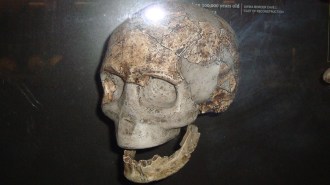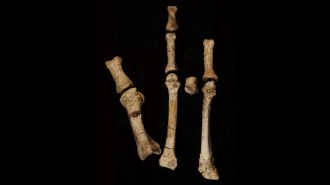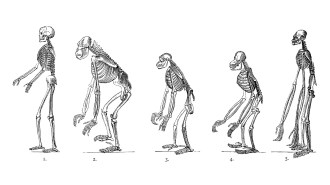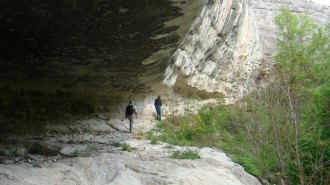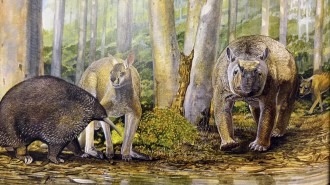New age for ancient Americans
Researchers have long regarded remains of the prehistoric Clovis culture as the oldest solid evidence of people in the Americas. However, new radiocarbon dates for North American Clovis sites challenge that assumption.
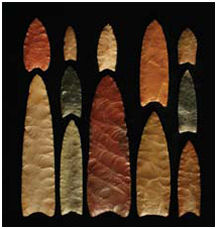
Clovis culture lasted from 11,500 to 10,900 years ago, according to prior radiocarbon measures. That estimate should be revised to extend only from 11,050 to 10,800 years ago, contend Michael R. Waters of Texas A&M University in College Station and Thomas W. Stafford Jr. of Stafford Research Laboratories in Lafayette, Colo. Thus, Clovis people—who made distinctively shaped stone spear points—inhabited the New World considerably later and for a much shorter time than suggested by earlier data, the scientists assert in the Feb. 23 Science.
Their conclusion rests on evidence from 11 Clovis sites across North America. Waters and Stafford combined radiocarbon dates previously obtained from five of those sites with new radiocarbon measurements of bone, ivory, and seeds from the remaining sites.
Previously obtained radiocarbon ages for six sites of non-Clovis people in North and South America overlap with the revised Clovis dates. The scientists thus suspect that people from northeastern Asia spread throughout the New World before purveyors of Clovis culture showed up along the same route. It’s unlikely that Clovis people entered North America, expanded in numbers, adapted to a variety of environments, and then founded different cultures down to the southern tip of South America within a mere 250 years, Waters and Stafford say.


